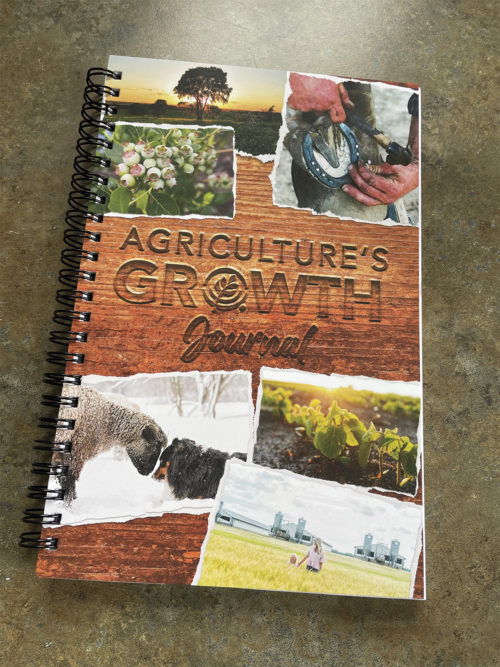Increasing feed costs. Weather. Mastitis. Working with family. Sick calves. Changing contracts. Paperwork. Bad silage. Your brother-in-law. The list of stressors on a dairy farm is long. Unfortunately, most of them are also chronic.
Consider chronic mastitis. Left untreated, the infected quarter can atrophy. Did you know your brain does the same when you’re under chronic stress? Believe it or not, science shows the ongoing cortisol resulting from chronic stress can result in a smaller brain.
Cows with neglected subclinical mastitis can be predisposed to developing chronic mastitis. Humans who don’t work to address chronic stressors are also more likely to deal with anxiety, depression and suicidal thoughts. It’s not likely that paperwork, the weather or your in-laws are going to change, so what can you do to deal with the stress they bring?
Few farmers take the time to develop an environment to help the brain cope with the tankerload of stress that is part of your business. However, do you put your cows in the best environment to prevent mastitis, have protocols in place and learn the latest techniques to manage mastitis? Your self-care deserves the same attention; my hope is that this article will give you some ways to proactively deal with stress and put yourself in the best environment.
Research has shown when people have fewer life stressors, gratitude has more potent effects to prevent suicide. In other words, it’s essential to build a practice of gratitude proactively, before the big stress hits the fan. Gratitude is an important way to build resiliency. Gratitude brings joy and goes well beyond thankfulness. And while this is Thanksgiving season, gratitude is not about a holiday – but creating a positive environment to help yourself throughout the year.
“It’s not joy that makes us grateful; it’s gratitude that makes us joyful,” Benedictine monk David Steindl-Rast said. He recommends we find a way to sustain the feelings of Thanksgiving year-round. This TedX speaker calls for us to live gratefully, rather than feeling gratitude randomly. In other words, how can you make the feelings of Thanksgiving last year-round?
“We have to build stop signs into our lives,” he says. He compares his recommended method to what we learned as children about crossing the street: “Stop, look, go.” Interrupt your rapid pace, whether walking cows, milking, going over business plans, chopping silage or training employees. Stop – that means your thoughts, your phone checking, your worrying. Look – pay attention to what is happening around you. Go – feel a sense of gratitude.
Some days you may be grateful for the manure scraper or robots working; other days you may be moved by the chance to feed the world or leading a great team. The point is to develop a practice of gratitude – both to bring you joy daily and to build resiliency for when stress escalates later. Actively practice stopping, paying attention to what is happening in your life and finding something to give thanks for. Live gratefully. Studies show you’ll experience improved sleep, relationships and decision-making.
Like all practices in your business, there are different approaches to employing gratitude to help with long-term chronic stress management. Terry Lawton from Massachusetts and Joanna Lidback from Vermont are dairy farmers who keep a gratitude list.
“Even if it feels like there is nothing to be grateful for, there is usually electricity, hot water, shower and a bed,” Terry notes.
Joanna adds, “I don’t add to it daily, but when I am feeling really overwhelmed, I stop and add at least one thing to it, and sometimes read the other things I’ve written.”
Need more? Here are some habits and ideas shared by others in agriculture about how they live gratefully.
- Posting photos with your daily or weekly thanksgiving on social media. One of my speaking colleagues does this daily on Facebook and adds humor. It’s a great reminder for others to find laughter and gratitude.
- Giving thanks with family at meals through grace, a standard question asked of each family member daily or talking about high/low points of each day.
- Emailing yourself moments of gratitude because you type faster than you write.
- Watching videos. Abby Wiedmeyer, a staff writer for Dairy Star, highlighted how her family dealt with exiting dairy farming. “When we sold our cows a few years ago, our whole family was depressed. ‘Gratitude Prompts Happiness’ is a video that helped snap me out of it, along with the entire family listing one thing they were grateful for every morning. We did that for two years, and I still look back on it sometimes when I need a smile.”
- Asking employees to identify points of gratitude in a meeting, on a bulletin board or through the company newsletter. A positive mindset is contagious.
- Using tractor, commute, skid loader or feed mixing time to reflect on what you’re thankful for this week in your lifestyle and business. Repeat next week.
- Finding apps to send daily reminders, questions, etc.
- Studying related verses in scripture and finding one you can keep in your pocket or office as a reminder.
- Listening to related songs or podcasts.
- Writing three things you’re grateful for in a journal daily or using notes on your phone to keep an ongoing list.
- Volunteering with young people, in a food shelter, on a mission project or with senior citizens to get a perspective check.
- Praying or meditating about gratitude.
- Creating a virtual community group focused on gratitude for accountability and idea sharing.
- Writing a list of questions as prompts to remind you about a grateful life, e.g., What stop signs can you build into your day to promote gratitude?
- Giving gifts related to gratitude. Melissa Carabeau, a nutritionist in Vermont, shared that a veterinarian gave her a stone inscribed with “gratitude,” which Melissa keeps in her cupholder and looks at often.
Which of these can you put to work? Stress management is an essential business skill in 2022, and statistics clearly show the dairy business needs to do a better job with mental wellness. Practicing gratitude is an approachable and proactive way to deal with the chronic stress prevalent in agriculture – and it can be cultivated over time.
Stress happens – and just like mastitis, you’re not likely to avoid it. How can you better prepare for chronic stress through employing gratitude? The difference is in how you plan and manage your environment proactively. What you put into your brain will eventually come back out; research shows that gratitude has a positive effect on other brain behaviors. In turn, that positively influences those you work with daily to do the same.
Where can you "stop, look and live gratefully" in your business and family life to manage your chronic stress? Today is a great day to start.








